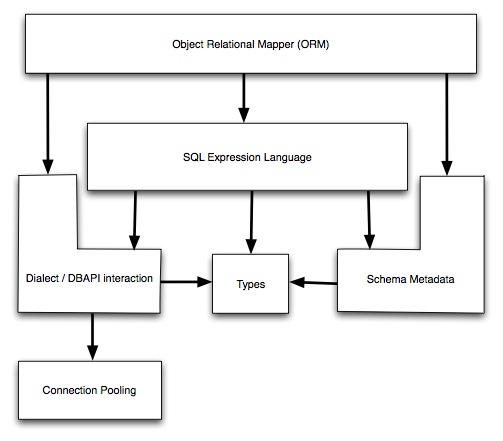Main Documentation¶
- Mapper Configuration - A comprehensive walkthrough of major ORM patterns and techniques.
- Using the Session - A detailed description of SQLAlchemy’s Session object
- Database Engines - Describes SQLAlchemy’s database-connection facilities, including connection documentation and working with connections and transactions.
- Database Meta Data - All about schema management using MetaData and Table objects; reading database schemas into your application, creating and dropping tables, constraints, defaults, sequences, indexes.
- Connection Pooling - Further detail about SQLAlchemy’s connection pool library.
- Column and Data Types - Datatypes included with SQLAlchemy, their functions, as well as how to create your own types.
- sqlalchemy.ext - Included addons for SQLAlchemy
